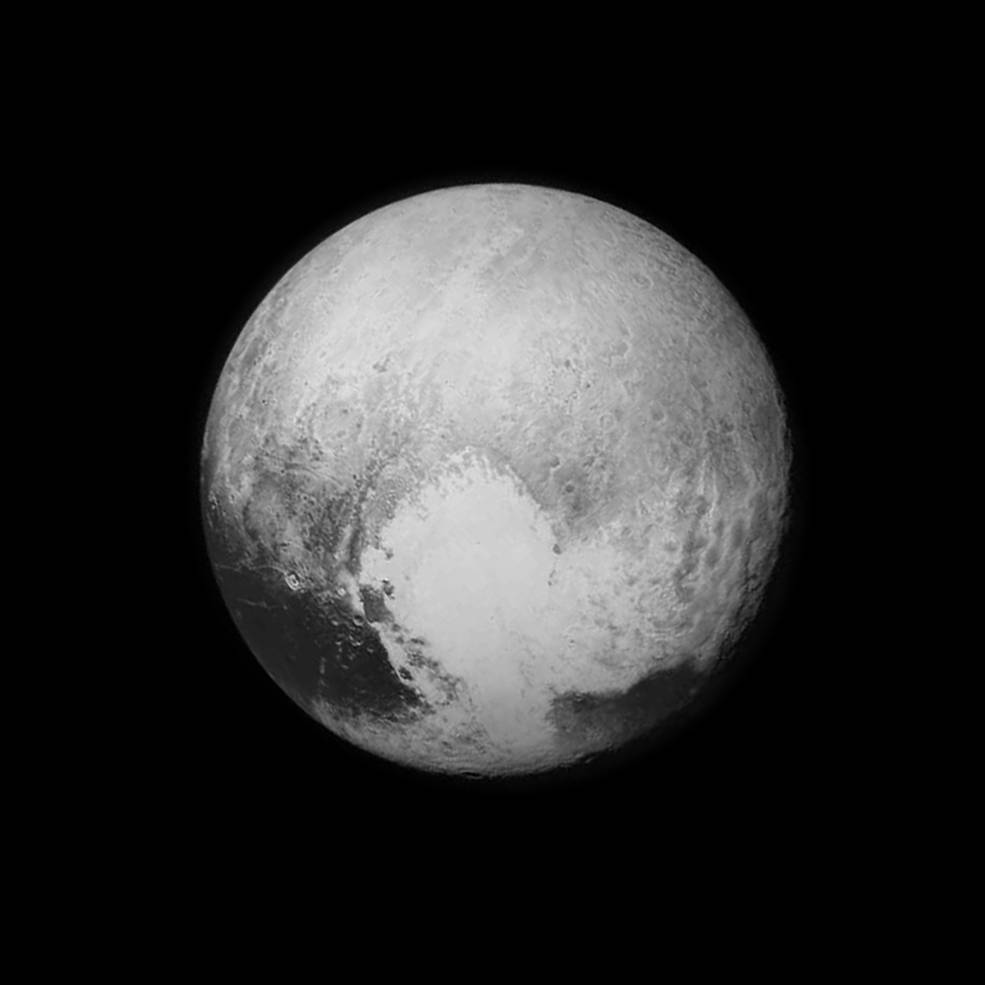SNEAK PEAK of gorgeous Pluto! A Love Note From Pluto In True Color Before The Flyby


The dwarf planet has sent a love note back to Earth. This is the last and most detailed image of Pluto we will get before the moment of closest approach - 7:49 a.m. EDT today. The image was taken from NASA's New Horizons spacecraft at about 4 p.m. EDT on July 13, about 16 hours before the moment of closest approach. New Horizons was 766,000 kilometers (476,000 miles) from the surface.
The newest image shows Pluto's rich and diverse surface terrain. The most prominent feature is a bright area informally known as the "heart". The "heart" is about 1,600 kilometers (1,000 miles) wide and sits just above the equator. Prominently displayed are also various dark and bright areas, craters (including a cluster on the "Whale's" head - a large dark region below the heart), and lumpy mountainous patches. Pluto and Charon are the same age but Pluto displays a smoother and less cratered surface compared to Charon, indicating that geological and atmospheric processes have made the surface look younger.
"Wow!" said New Horizons principal investigator Alan Stern, Southwest Research Institute, Boulder, Colorado, when the image was received. "My prediction was that we would find something wonderful, and we did. This is proof that good things really do come in small packages."
The best is yet to come. "Our data tomorrow (Wednesday, July 15) will have ten times the resolution of what we see today and it will knock your socks off," said Stern.
New Horizons will 'phone' home tonight at 9:02 PM EDT to let us know if it survived the flyby of the Pluto system. You can watch the celebrations live on NASA TV starting at 8:00 PM EDT.
For the original Pluto press release, click here.







